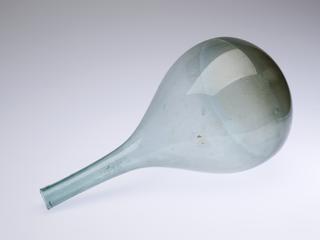
Microbalance used during 1953 Mount everest expedition
- Made:
- 1952-3 in unknown place








Part of a microbalance used to determine water loss from climbers’ lungs before and after exercise, used by Dr Griffith Pugh to provide physiological data for and during the Mount Everest expedition of 1953, United Kingdom, 1952-3.
What does it take to climb Everest, the world’s tallest mountain? Dehydration is one of the biggest risks climbers face at high altitudes. However, traditionally climbers have drunk very little during high altitude expeditions. Dr Griffith Pugh really emphasised the importance of staying hydrated. His research found that not only did climbers require more hydration because of the exertion, but also because the air is very dry at altitude and the lower levels of oxygen mean that people breathe more heavily. Pugh used a Douglas bag to collect expired air before and during exercise. It was then placed in an ice cave, freezing out the water vapour. The microbalance was then used to measure changes in the weight of the Douglas bag comparing results before and after exercise. Pugh’s results showed that in a 7-hour day, climbers would lose about 1 litre of water from the lungs alone.
Pugh’s emphasis on drinking enough made an impression on the team. When Edmund Hillary and Tenzing Norgay awoke at 4am at a height of around 8503 meters (27900 feet) to begin their summit attempt, they drank large amounts of lemonade (made with lemon and sugar) in a “determined effort to prevent the weaknesses arising from dehydration.”
By the 1950s, there had been several attempts to summit Everest and some climbers had got very close, but none had made it. The pioneering research of Dr Griffith Pugh was a key factor in the success of Edmund Hillary and Tenzing Norgay’s climb in 1953. Pugh’s background made him uniquely suited to this work. He was a practising doctor, but also a world class skier. He was selected to represent Great Britain in skiing at the 1936 Winter Olympics, but he was unable to attend due to injury. He also trained soldiers at the School of Mountain Warfare in Lebanon during the Second World War. It was here that Pugh began to research the impact of high altitude and extreme conditions on the body, leading to his work on Everest. Pugh took part in the expedition to Everest in 1953 and the preparatory expedition in the Himalayas in 1952, believing that laboratory research could not accurately recreate the experience of being in these extreme environments. His work established principles about acclimatising to altitude, food and water consumption during climbs and oxygen usage that continued to be used by climbers for decades.
Details
- Category:
- Laboratory Medicine
- Object Number:
- 2017-45
- Materials:
- metal (unknown)
- Measurements:
-
overall: 100 mm x 400 mm x 80 mm, .5 kg
- type:
- microbalance
- credit:
- Simon Pugh




